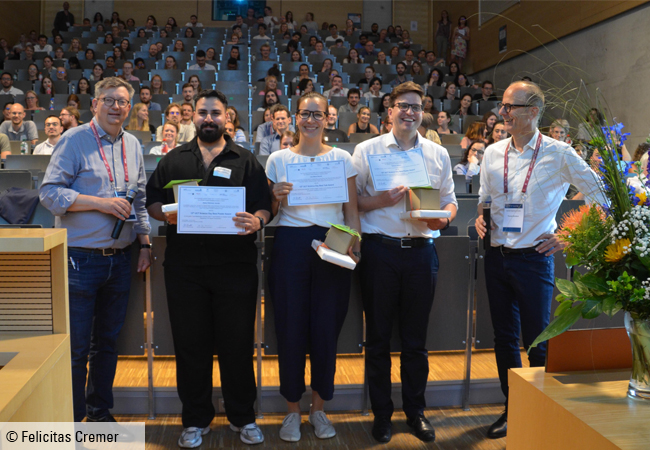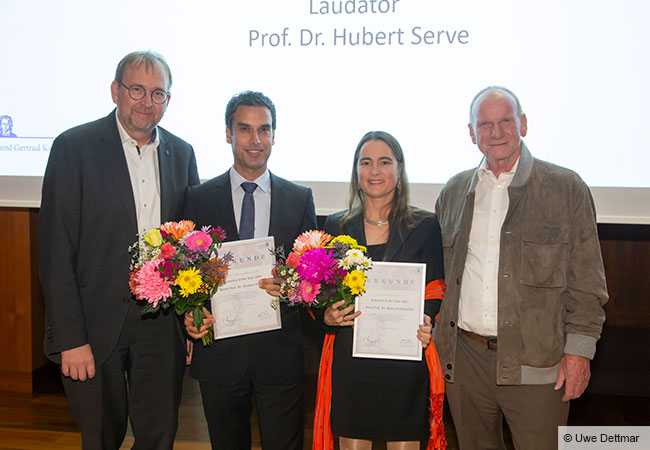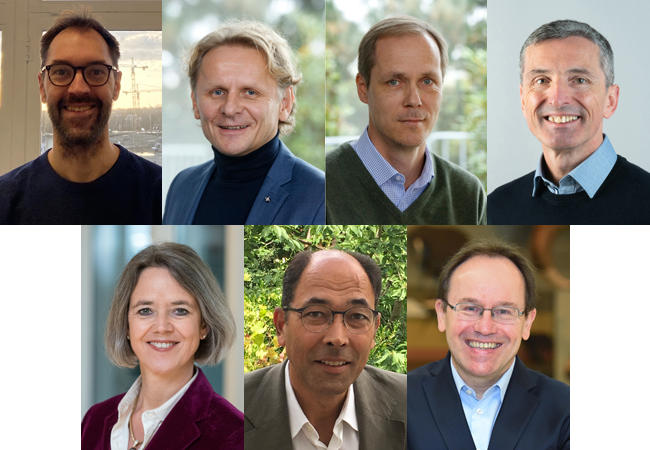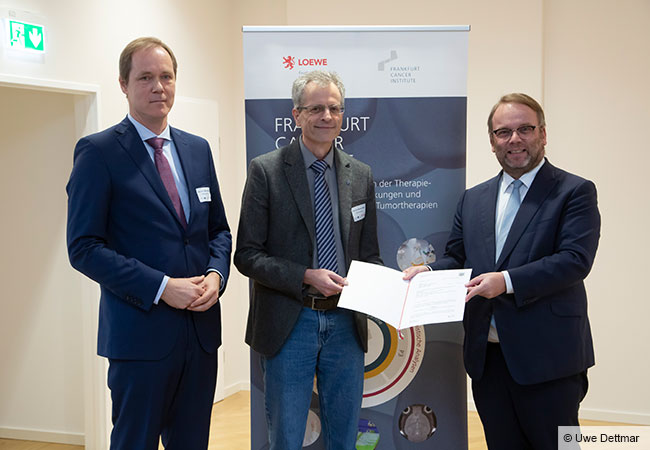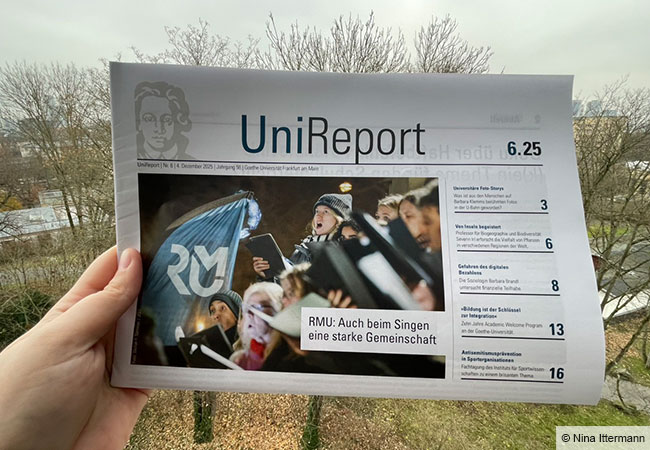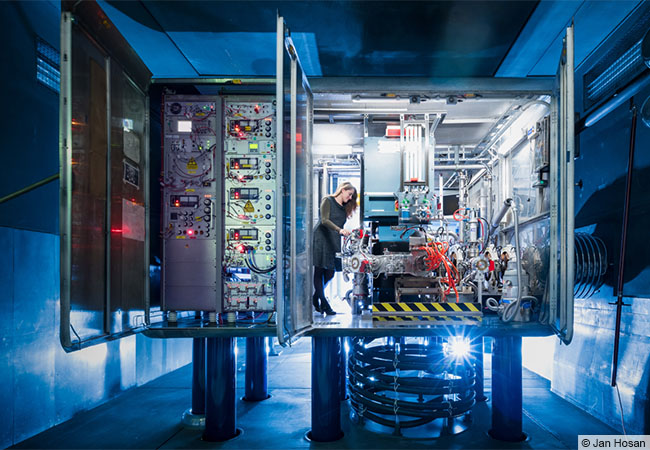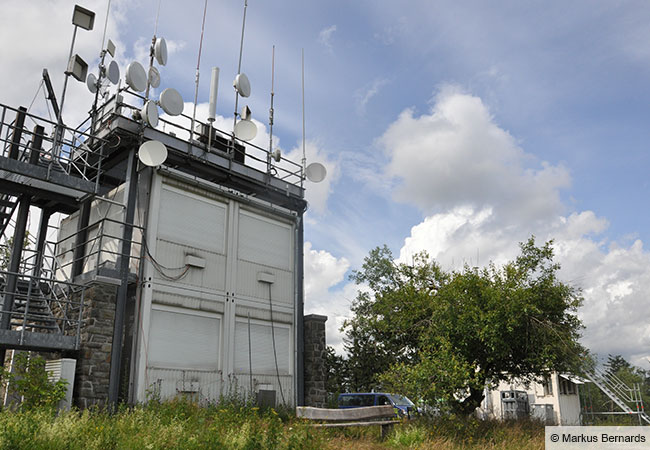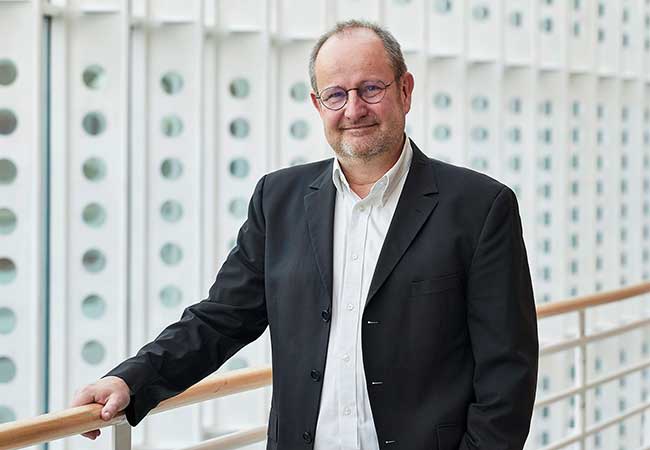Inauguration ceremony with Hessian Finance Minister Alexander Lorz
During a formal ceremony held on March 13, Hesse’s Finance Minister Professor R. Alexander Lorz officially inaugurated the new Cooperative Brain Imaging Center (CoBIC), located on Goethe University’s Niederrad Campus. CoBIC is a joint initiative of Goethe University, Max Planck Institute for Empirical Aesthetics, and Ernst Strüngmann Institute for Neuroscience. The center provides researchers with direct access to cutting-edge technologies, enabling them to deepen our understanding of brain function and develop innovative therapies for neurological and psychiatric disorders.

With state-of-the-art equipment installed, offices set up, and around 100 researchers already at work, CoBIC has now been officially inaugurated on Goethe University’s Niederrad Campus.
The new research building was jointly funded by Goethe University Frankfurt and Max Planck Society (MPG) for Max Planck Institute for Empirical Aesthetics (MPIEA), as well as Ernst Strüngmann Institute for Neuroscience (ESI). The total costs for construction and initial setup amount to about €25 million, with the majority covered by the state of Hesse. An additional €12 million for large-scale equipment was made available by Max Planck Society and Goethe University.
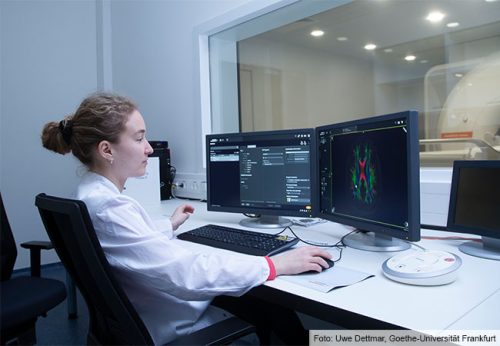
Building on Goethe University’s Brain Imaging Center, CoBIC offers research infrastructure, and at the same time also fosters interdisciplinary research in the neurosciences by bringing together fundamental neuroscience research institutes and University Medicine Frankfurt, both in terms of content and in terms of space. The center is equipped with three MRI scanners– two 3-Tesla MRI scanners and one 7-Tesla ultra-high-field MRI –as well as additional advanced imaging devices that allow for both high spatial and temporal resolution in the study of brain activity. Research at CoBIC focuses on the cerebral foundations of language and memory, neurological and psychiatric disorders, as well as the neural mechanisms underlying human skills, learning, and creativity, with a particular focus on music.
In keeping with CoBIC’s research topics, guests and staff came together at the inauguration ceremony to form a bell orchestra, performing Beethoven’s “Ode to Joy”. The performance was conducted by an animated projection of a brain on the wall.
Goethe University President Professor Enrico Schleiff said: “Neuroscientific imaging techniques are both incredibly fascinating and essential to science. These methods allow us to literally watch the brain in action, deepening our understanding of human cognition, improving treatments for neuropsychiatric disorders, and gaining insights into how to translate brain functions into strategies for the development of new computational techniques. Today, we celebrate the long-standing collaboration between Goethe University, Max Planck Institute for Empirical Aesthetics, and Ernst Strüngmann Institute – now embodied in this state-of-the-art research facility.”

He emphasized CoBIC’s importance as a neuroscience hub for the region: “For decades, the Rhine-Main region has been a major contributor to the international reputation of German neuroscience. To borrow a phrase from one of the research networks, we can rightly say: ‘Rhine-Main has brains.’ With CoBIC, the region has gained a crucial pillar that integrates advanced imaging expertise with fundamental and clinical neuroscience. This allows us to cover the entire spectrum of research, from single-neuron experiments to the study of the human brain – both healthy and diseased.”
Hesse’s Science Minister Timon Gremmels had to cancel his participation at short notice, but sent his congratulations on the opening: “At CoBIC, researchers from various disciplines work together, leveraging their complementary expertise. These types of collaborations strengthen the entire Hessian research landscape. Universities and research institutions are most successful when they focus on their strengths and work together. I am particularly pleased that it was continuous state investment that made this opening possible: Some €17 million came from our HEUREKA university construction program, and an additional €7.4 million for the Max Planck Institute for Empirical Aesthetics was funded through a special science ministry grant.”
Hesse’s Finance Minister Professor R. Alexander Lorz declared: “The state of Hesse is committed to investing in excellent healthcare, research and education, right here on Niederrad Campus. The inauguration of CoBIC marks yet another milestone in the development of this campus as a premier location for scientific discovery. This facility will serve as a highly advanced research center for neuroscientific imaging. The ongoing construction activity is a testimony to the importance of research and education in Hesse, with the state financing this outstanding science and research center with €17 million. We are pleased to officially hand over this building to the university and its researchers.”
Professor Christian Doeller, Vice President of the Max Planck Society said: “We are excited about the research opportunities offered by the new 7-Tesla ultra-high-field MRI scanner, which enables interdisciplinary teams to explore entirely new research questions at an extremely high level of neuroanatomical resolution. I anticipate fascinating synergies between research on neurobiological mechanisms, cognitive processes, and neuropsychiatric disorders.”
Professor Wolf Singer, Senior Fellow at ESI and former director at MPI for Brain Research, stated: “The story of CoBIC’s development is a shining example of successful collaboration between Goethe University, the State of Hesse, Max Planck Society, and Ernst Strüngmann Institute. As a platform for translational neuroscience, CoBIC bridges the gap between fundamental neurobiological research and clinical applications.”
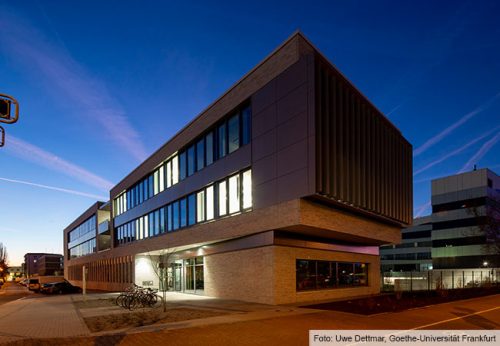
Thomas Platte, Director of Hesse’s Building and Real Estate Agency (LBIH), said: “Top-level research requires both brilliant minds and first-class infrastructure. The new CoBIC facility is a high-tech research building, specifically designed to meet the unique needs of neuroscientists. The installation of large-scale medical devices was one of the most complex aspects of this ambitious construction project, which was successfully completed thanks to precise planning and execution. Covering nearly 4,000 square meters, the building combines sustainable architecture with highly efficient technical systems, setting new standards for the future of research.”



